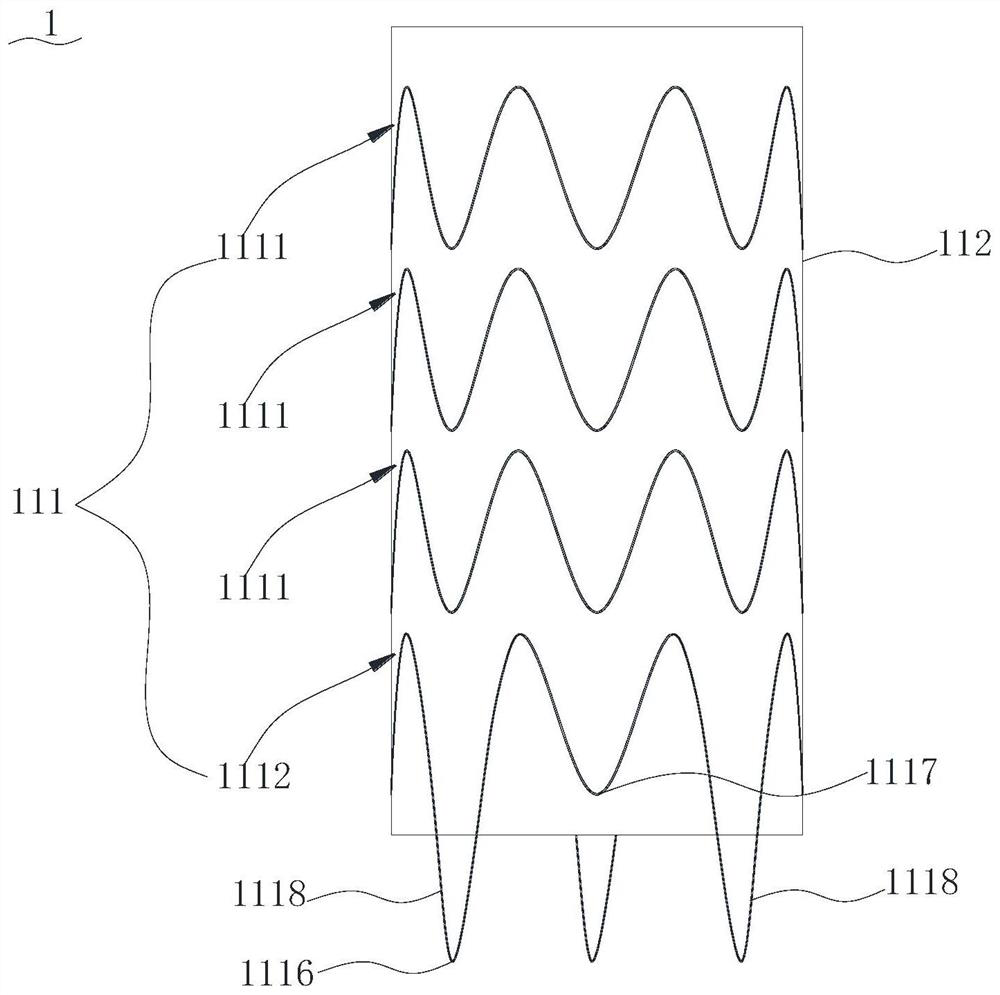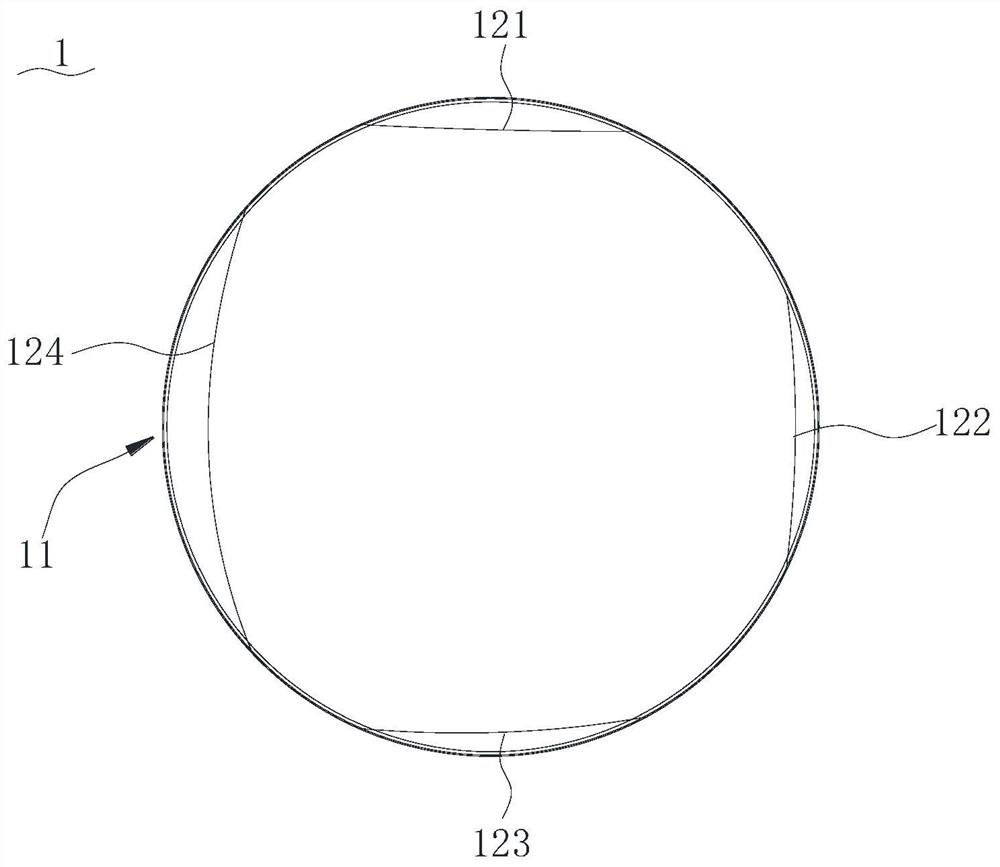Covered stent, conveying system and conveying method
A technology of covered stents and components, applied in the field of medical devices, achieves the effects of convenient release, convenient operation and small release action
- Summary
- Abstract
- Description
- Claims
- Application Information
AI Technical Summary
Problems solved by technology
Method used
Image
Examples
no. 1 example
[0091] see Figure 1 to Figure 2 With the structure shown, the stent graft 1 of this embodiment includes a stent graft body 11 and a binding mechanism.
[0092] The stent-graft body 11 includes a stent 111 and a membrane 112 disposed on the surface of the stent 111 .
[0093] The bracket 111 includes a plurality of support rings, and the plurality of support rings are arranged along the axial direction and make the whole cylindrical shape.
[0094] Each support ring is ring-shaped, and a complete circle is arranged along the circumferential direction. Each support ring can shrink or expand in the radial direction, thereby enabling the stent 111 to shrink or expand in the radial direction.
[0095] Specifically, each support ring includes a plurality of support rods connected in sequence at an angle. In the present application, "connected at an angle" refers to being connected to each other and forming an included angle greater than 0 degrees and less than 180 degrees. A pl...
no. 3 example
[0150] refer to Figure 14 , Figure 15 with Figure 16 The difference between this embodiment and the first embodiment of the stent-graft is that the binding mechanism in this embodiment is located on the outer periphery of the stent-graft body 31 .
[0151] The binding mechanism also includes a plurality of wire harness assemblies 32 arranged at intervals along the stent graft body 31 .
[0152] Both ends of each wire harness assembly 32 are fixedly connected to the outer periphery of the stent graft body 31 . Specifically, in this embodiment, the two ends of the wire harness assembly 32 are arranged at intervals along the axial direction of the stent-graft body 31 , and the connecting line between the two ends is parallel to the axis of the stent-graft body 31 .
[0153] Specifically, the wire harness assembly 32 is made of nickel-titanium wire.
[0154] The contraction principle of the wire harness assembly 32 is as follows:
[0155] refer to Figure 17 , when the wi...
no. 4 example
[0165] The difference between this embodiment and the second embodiment of the stent-graft is that: the two ends of the wire harness assembly are arranged at intervals along the circumferential direction of the stent-graft body, and the two ends are located at the same axial height.
[0166] Define the ends of the harness assembly as the first end and the second end.
[0167] The retraction principle of the harness assembly is as follows:
[0168] When the wire harness assembly is shrinking, the middle area starts from the first end, winds along the direction from the first end to the second end and returns to the first end, and at the first end, the direction of the wire harness assembly from the proximal end to the distal end Pass through the wire hole and extend distally.
PUM
 Login to View More
Login to View More Abstract
Description
Claims
Application Information
 Login to View More
Login to View More - R&D
- Intellectual Property
- Life Sciences
- Materials
- Tech Scout
- Unparalleled Data Quality
- Higher Quality Content
- 60% Fewer Hallucinations
Browse by: Latest US Patents, China's latest patents, Technical Efficacy Thesaurus, Application Domain, Technology Topic, Popular Technical Reports.
© 2025 PatSnap. All rights reserved.Legal|Privacy policy|Modern Slavery Act Transparency Statement|Sitemap|About US| Contact US: help@patsnap.com



